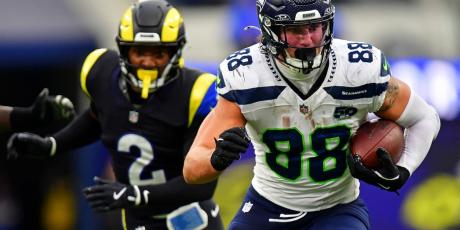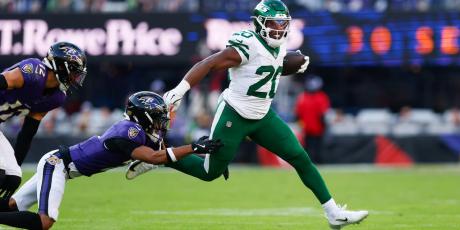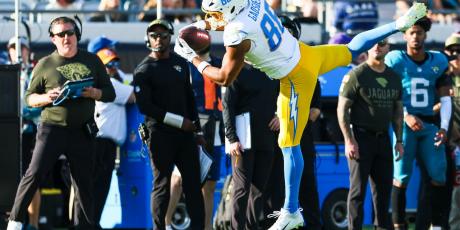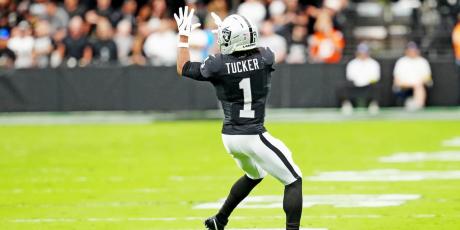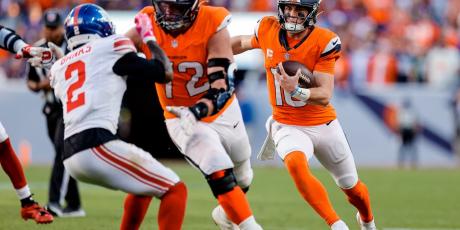Streaming Defenses Works and Here's How to Do It

In leagues with small roster sizes, streaming defenses continues to be a winning strategy. For those unfamiliar, you stream your defense by acquiring the best option week-to-week, off the waiver wire, rather than trying to draft a top defense.
Why Streaming Works
As I write this, the Chicago Bears are the first defense coming off the board in the drafts, with an average draft position in the 10th round, before players like DK Metcalf and Emmanuel Sanders that could be league winners this year. While there is no doubt that the Bears have a great defense, the most likely explanation for why the Bears are being drafted so early is how well they performed last season, finishing first overall amongst defenses with over 15% more points than any other team.
While we have the Bears projected first overall this season, we do not expect them to score anywhere near last year's total. It is unlikely that they will again have six defensive touchdowns (50% more than any other team) or 27 interceptions (29% more than any other team). Both were fluky outliers. We even expect their 50 sack total to regress somewhat, down to less than 45. Finally, the Bears schedule looks much worse this season—they face the sixth-most difficult schedule of opposing offenses, while they had an easier-than-average schedule last season.
That last point is actually the most important, and the key to why streaming works. As we will discuss below, defensive scoring is more influenced by the opponent's offense than by the skill of the defense. Facing a bad offense means fewer points scored, more likelihood of interceptions, and more likelihood of sacks, all important components of defensive scoring.
Our streaming defense strategy will focus on acquiring mediocre defenses with great matchups—facing inept offenses, interception-prone quarterbacks, and poor offensive lines—situations where even mediocre defenses can put up big point totals. Streaming also allows us to take advantage of injuries to key offensive players (especially quarterbacks) by acquiring the defenses they face, an option not available to us when using a single, fixed defense.
The Bears are locked into a difficult schedule, where they face difficult teams in their division, and, due to their success last year, face difficult out-of-division opponents as well. By switching between defenses week-to-week, our sequence of opponents will be easier than the schedule of any team in the league. Even using mediocre defenses, that schedule should allow us to get the production of a top-10 defense, and we get to do so without spending any significant draft capital.
While we will go the details of how to predict great matchups below, one place to start is our Hot Spot tool for team defense. This will update during the season to reflect the performance of each team. After a few weeks, the bright green squares should start to identify some of the opponents we want to target.
What We Look For
Below, we will discuss the key components that go into predicting defensive scoring. Following some ideas from quickonthedrawl as well as 4for4's own new defensive models, we ignore the random, unpredictable components such as defensive TDs and instead focus on the following elements.
Points Allowed
The most familiar element of defensive scoring comes from the points they allow to the opposing offense in the game. The Vegas lines are a reliable predictor here. Subtracting the spread from the over/under and dividing by two gives the team's "implied team total", the number of points that Vegas predicts them to score. We want defenses facing opponents with low implied team totals.
The Vegas predictions are quite difficult to beat. They are too low and too high each almost exactly 50% of the time, indicating that they are using well-calibrated models. They also take the latest team news and injuries into account. In short, we will want to rely heavily on these as the starting point for our own predictions.
Sacks
Vegas lines also impact the other components of scoring. Sacks are more likely in situations where the team has to throw more. (You can't have a sack on a running play, by definition.) Teams that are underdogs, per the Vegas lines, are likely to end up throwing more. If their implied team total is also low, then Vegas expects them to throw a lot but fail to score points, potentially due to sacks (but a good situation for fantasy scoring regardless).
In addition to the Vegas lines, our model also looks at the average sacks per game produced by the defense and average sacks per game allowed by the offense. Of the two, sacks allowed by the offense is significantly more important (it is weighted almost five times more heavily in our Poisson regression model). This is yet another example of why the opposing offense is more important than the skill of the defense in predicting fantasy points.
Given that, another situation to target is offenses with injuries on the offensive line. Backup players, in addition to being less skilled, have also not had as much practice communicating with the other offensive players. The potential for miscommunication creates a great opportunity for additional sacks.
Interceptions
The best predictor of interceptions is facing a quarterback with a history of throwing them. We look at the quarterback's career interception percentage to find the ones to target. An excellent situation in this regard is to face a backup quarterback, playing due to the injury of the starter.
In addition to having a turnover-prone quarterback, we also need a situation where the quarterback is likely to have to throw the ball. That situation is easy to spot as the team will be significant underdogs. Teams that fall behind not only throw the ball more but also make riskier throws, hoping for a big play that will close the gap with the other team. Such throws are fertile ground for interceptions.
Rookie quarterbacks tend to be interception-prone. If they are playing on losing teams, then we are likely to see them throw the ball a lot when playing from behind, giving us an ideal situation for interceptions. The defenses facing Daniel Jones and Josh Rosen later in the season will be likely targets.





